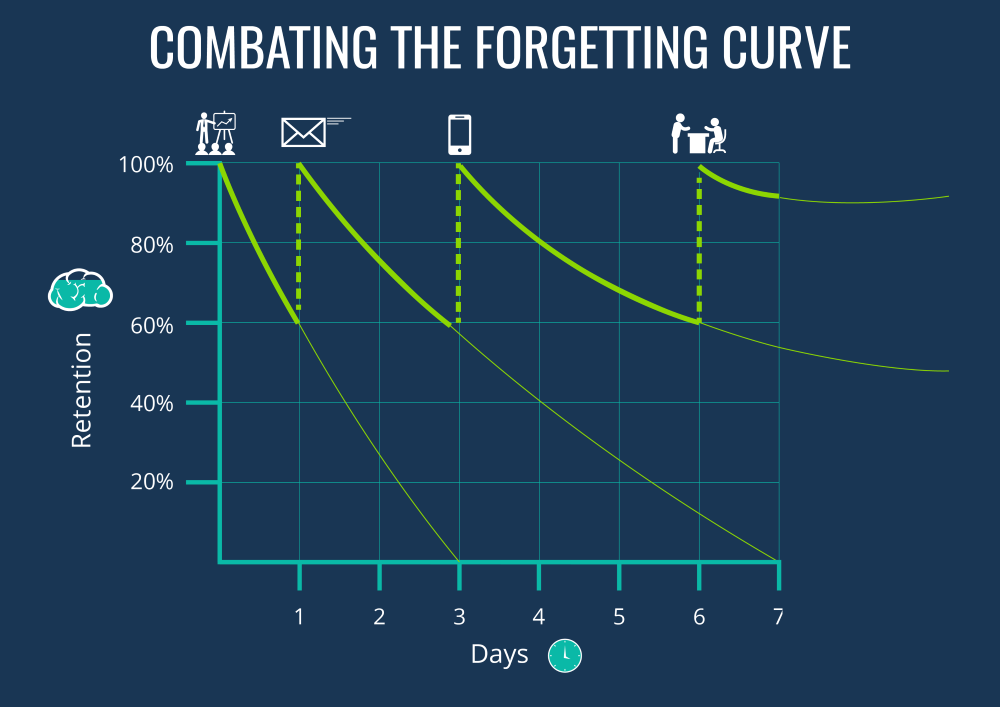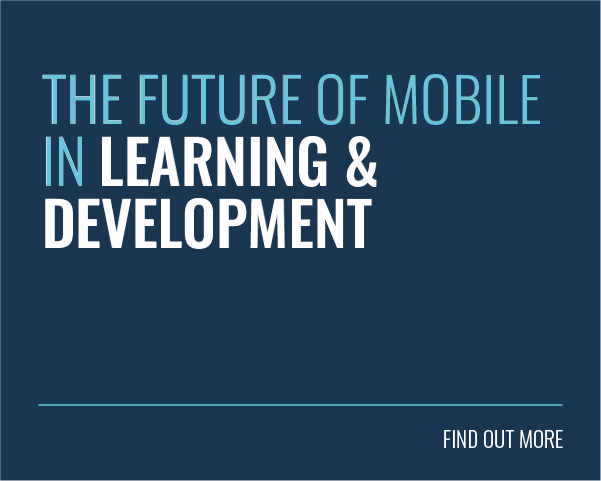 Do you need an mLearning solution?
Do you need an mLearning solution?
If you’re working on a new training programme, you might wonder if you really need to include a mobile learning, or mLearning element. Learning technologies have come a long way in the last decade or so and keeping up with the latest developments can be a big challenge. The easiest thing to do is to convince yourself that mLearning is just the latest flash-in-the-pan or a fad that will soon pass.
However, do you really want to risk alienating your learners and giving them the same ineffective training? Do you want to discard new methods without investigating the possibilities? For all you know, mLearning might actually make your job even easier in the long run!
The fact is that mLearning solutions have a lot of potential for dealing with the oldest recurring issues in the L&D sphere. Let’s take a look at how mobile learning might give your training a brighter outlook.
How Can an mLearning Solution Help Your Organisation?
Battling Back Against the Forgetting Curve
When it comes to L&D, many organisations are happy to rely on occasional face-to-face training seminars. In a lot of ways, sticking with this time-honoured method is just the easiest thing to do. Although they have their place, one-off training is among the most inefficient methods out there.
The figures vary, depending on where you look, but it’s generally accepted that we forget most of what we learn (about 70%) within the first 24 hours of being taught. This is the essence of the Forgetting Curve hypothesis.

To improve retention, the knowledge has to be reinforced at regular intervals, otherwise it disappears for good. After every intervention, the rate of loss gets less dramatic. Eventually, the learner is able to hold on to most of the knowledge and they’re able to translate it into behavioural change.
mLearning lets you intervene where it counts – right at your learners’ fingertips. Since almost everyone has a mobile device, it seems silly not to make the most of them.
The Importance of Contextualising Knowledge
The context in which you learn something defines how you remember it and relate it to your experience. If you’ve only ever learned about something in a classroom, it’s more difficult to apply that knowledge at work. Without the right context surrounding the knowledge, it just becomes meaningless theory.
 The great thing about mobile devices is that your learners carry them around wherever they go. They’ll invariably spend most of their working day with a phone in their pocket. The chances are they’ll look at their phone several times throughout the day (whether you like it or not!).
The great thing about mobile devices is that your learners carry them around wherever they go. They’ll invariably spend most of their working day with a phone in their pocket. The chances are they’ll look at their phone several times throughout the day (whether you like it or not!).
An mLearning solution gives you the chance to push learning interventions that will be seen in the perfect context. In this way, you can structure the learning to apply to every individual learner, giving it more meaning. Rather than simply telling them facts, you can get them to share their own experiences.
For example, let’s say you want to teach retail staff about visual merchandising. You could push a quick task and ask them for an example of a good (or bad) display in their store. They could then take a photo and upload it to their LMS. By sharing these photos on a social stream, other employees can also learn from their example.
What Bloom’s Taxonomy Tells Us
To see how mLearning can help you deliver effective training programmes, you need only look to the core principles of instructional design. Bloom’s Taxonomy is a framework that categorises learning objectives. It’s used to help trainers figure out what they should be asking learners as they get deeper into their learning path.

In short, Bloom’s taxonomy lets trainers create the map that takes learners from acquiring knowledge to applying it effectively. The first two stages, Knowledge and Comprehension, can be tackled in a face-to-face context without much trouble.
Here’s our very own Juliette discussing Bloom’s Taxonomy in more detail:
Past that, it becomes harder to prompt learners to apply the knowledge in the right context. It’s harder still to measure whether that knowledge has had any effect on behaviour. As we’ve seen, the ubiquity of mobile devices creates a wealth of opportunities to tackle the later stages of Bloom’s Taxonomy.
Final Word
With a Mobile Learning solution, you can deliver quiz questions on a regular basis, rather than springing a longer assessment every couple of months. This keeps the learners’ development at the front of their minds. They’re more likely to analyse their own performance and actively evaluate that of their colleagues.
Effective training is more about changing the way people behave than filling their heads with facts. The only way to do this is to reinforce the training as often as possible. Although this can be achieved to a degree with traditional methods, a Mobile Learning solution can boost the performance of the overall programme.








